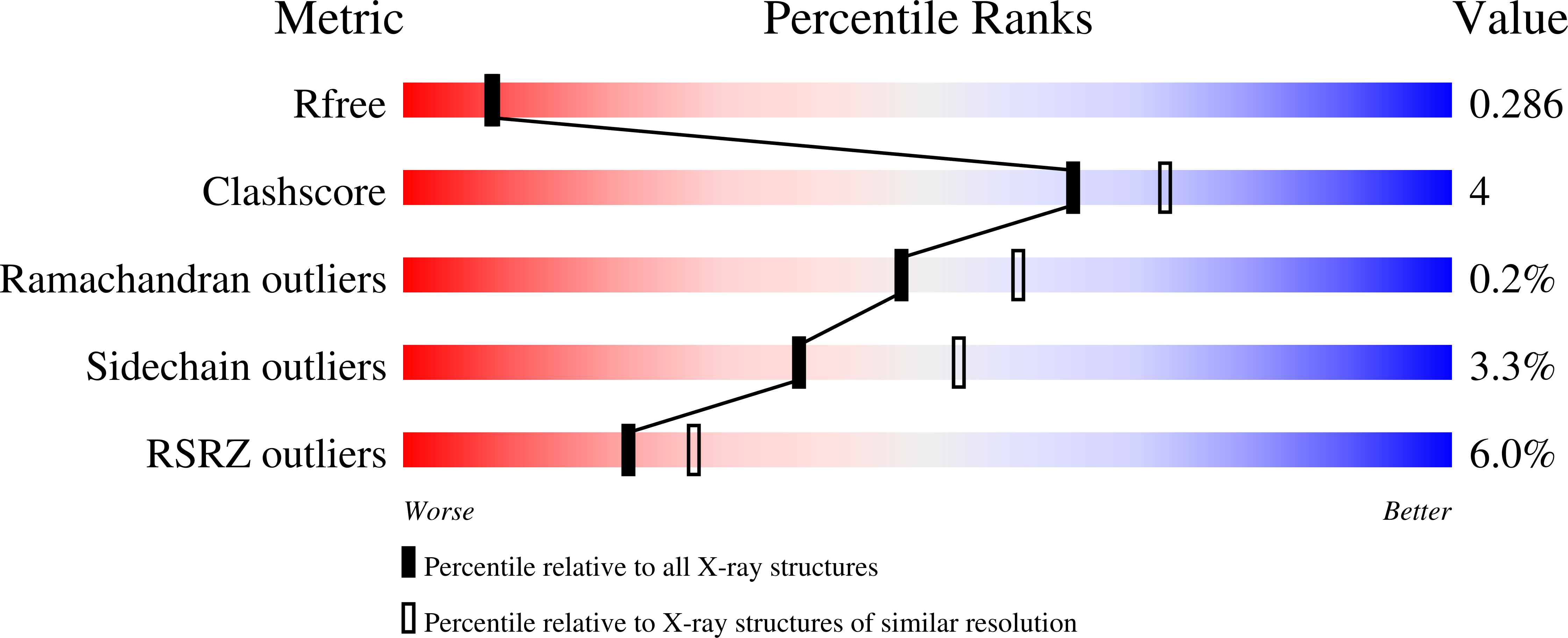Structures of Kibdelomycin Bound to Staphylococcus Aureus Gyrb and Pare Showed a Novel U-Shaped Binding Mode.
Lu, J., Patel, S., Sharma, N., Soisson, S.M., Kishii, R., Takei, M., Fukuda, Y., Lumb, K.J., Singh, S.B.(2014) ACS Chem Biol 9: 2023
- PubMed: 24992706
- DOI: https://doi.org/10.1021/cb5001197
- Primary Citation of Related Structures:
4URL, 4URM, 4URN, 4URO - PubMed Abstract:
Bacterial resistance to antibiotics continues to pose serious challenges as the discovery rate for new antibiotics fades. Kibdelomycin is one of the rare, novel, natural product antibiotics discovered recently that inhibits the bacterial DNA synthesis enzymes gyrase and topoisomerase IV. It is a broad-spectrum, Gram-positive antibiotic without cross-resistance to known gyrase inhibitors, including clinically effective quinolones. To understand its mechanism of action, binding mode, and lack of cross-resistance, we have co-crystallized kibdelomycin and novobiocin with the N-terminal domains of Staphylococcus aureus gyrase B (24 kDa) and topo IV (ParE, 24 and 43 kDa). Kibdelomycin shows a unique "dual-arm", U-shaped binding mode in both crystal structures. The pyrrolamide moiety in the lower part of kibdelomycin penetrates deeply into the ATP-binding site pocket, whereas the isopropyl-tetramic acid and sugar moiety of the upper part thoroughly engage in polar interactions with a surface patch of the protein. The isoproramic acid (1,3-dioxopyrrolidine) and a tetrahydropyran acetate group (Sugar A) make polar contact with a surface area consisting of helix α4 and the flexible loop connecting helices α3 and α4. The two arms are connected together by a rigid decalin linker that makes van del Waals contacts with the protein backbone. This "dual-arm", U-shaped, multicontact binding mode of kibdelomycin is unique and distinctively different from binding modes of other known gyrase inhibitors (e.g., coumarins and quinolones), which explains its lack of cross-resistance and low frequency of resistance. The crystal structures reported in this paper should enable design and discovery of analogues with better properties and antibacterial spectrum.
Organizational Affiliation:
Merck Research Laboratories, West Point, Pennsylvania 19486, United States.















